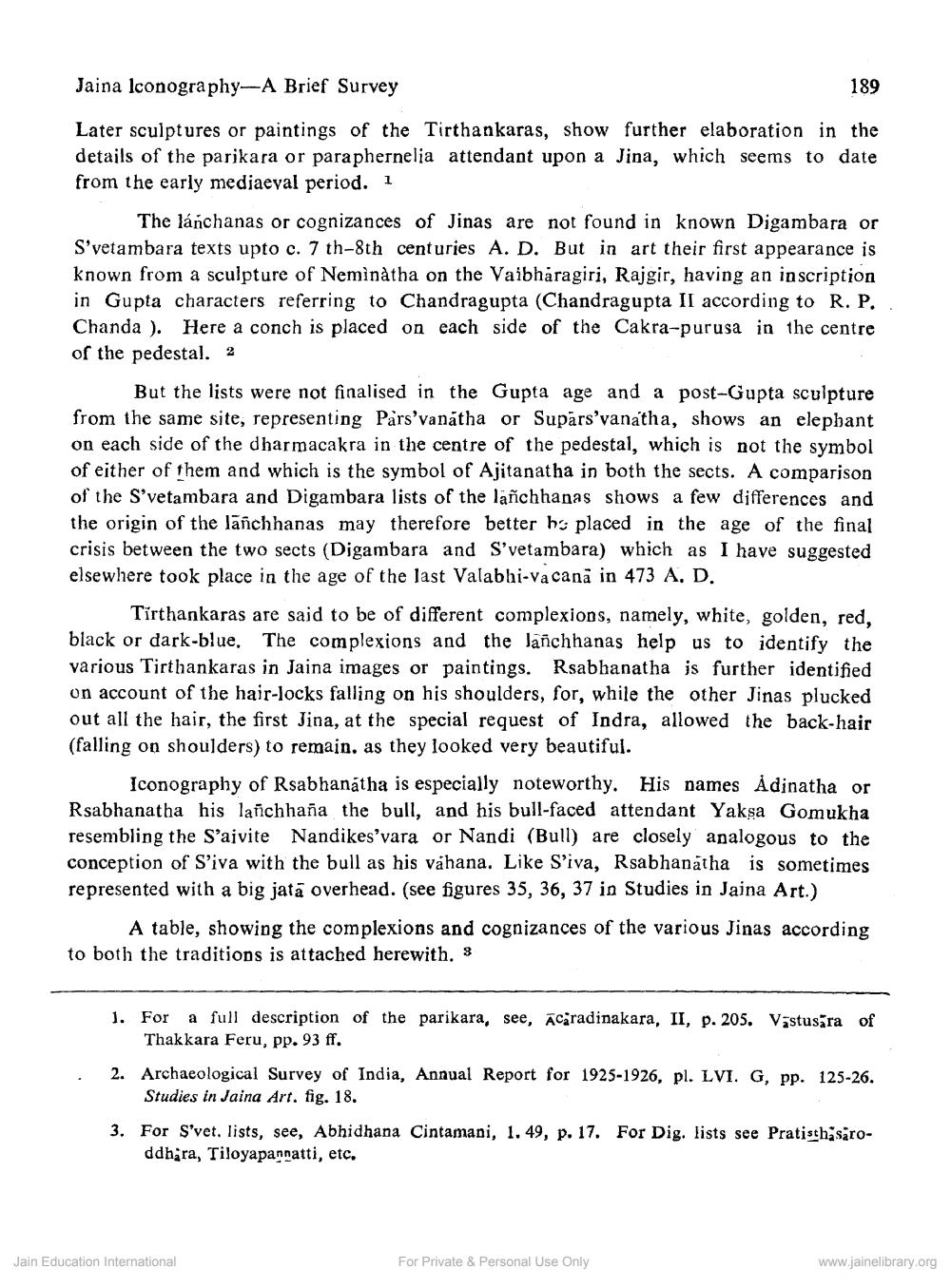________________
Jaina Iconography-A Brief Survey
189
Later sculptures or paintings of the Tirthankaras, show further elaboration in the details of the parikara or paraphernelia attendant upon a Jina, which seems to date from the early mediaeval period. 1
The lánchanas or cognizances of Jinas are not found in known Digambara or S'vetambara texts upto c. 7 th-8th centuries A. D. But in art their first appearance is known from a sculpture of Nemìnàtha on the Vaibharagiri, Rajgir, having an inscription in Gupta characters referring to Chandragupta (Chandragupta II according to R. P. Chanda ). Here a conch is placed on each side of the Cakra-purusa in the centre of the pedestal. 2
But the lists were not finalised in the Gupta age and a post-Gupta sculpture from the same site, representing Pars'vanátha or Supārs'vanatha, shows an elephant on each side of the dharmacakra in the centre of the pedestal, which is not the symbol of either of them and which is the symbol of Ajitanatha in both the sects. A comparison of the S'vetambara and Digambara lists of the lañchhanas shows a few differences and the origin of the lāñchhanas may therefore better ha placed in the age of the final crisis between the two sects (Digambara and S'vetambara) which as I have suggested elsewhere took place in the age of the last Valabhi-vacanã in 473 A, D.
Tirthankaras are said to be of different complexions, namely, white, golden, red, black or dark-blue. The complexions and the lañchhanas help us to identify the various Tirthankaras in Jaina images or paintings. Rsabhanatha is further identified on account of the hair-locks falling on his shoulders, for, while the other Jinas plucked out all the hair, the first Jina, at the special request of Indra, allowed the back-hair (falling on shoulders) to remain. as they looked very beautiful.
Iconography of Rsabhanatha is especially noteworthy. His names Adinatha or Rsabhanatha his lañchhana the bull, and his bull-faced attendant Yaksa Gomukha resembling the s'ajvite Nandikes'vara or Nandi (Bull) are closely analogous to the conception of S'iva with the bull as his váhana. Like S'iva, Rsabhanatha is sometimes represented with a big jatā overhead. (see figures 35, 36, 37 in Studies in Jaina Art.)
A table, showing the complexions and cognizances of the various Jinas according to both the traditions is attached herewith. 3
1. For a full description of the parikara, see, Acaradinakara, II, p. 205. Vastusara of
Thakkara Feru, pp. 93 ff. 2. Archaeological Survey of India, Annual Report for 1925-1926, pl. LVI. G, pp. 125-26.
Studies in Jaina Art. fig. 18.
3. For S'vet, lists, see, Abhidhana Cintamani, 1. 49, p. 17. For Dig. lists see Pratisthasaro
ddhara, Tiloyapannatti, etc.
Jain Education International
For Private & Personal Use Only
www.jainelibrary.org




